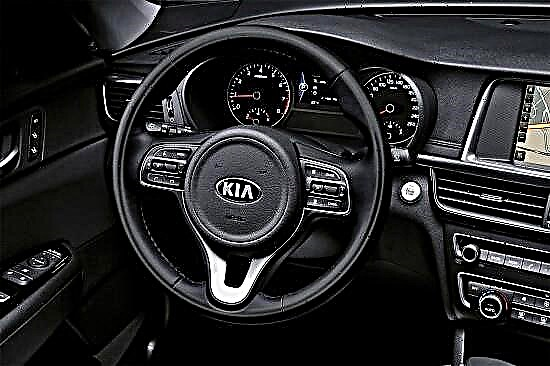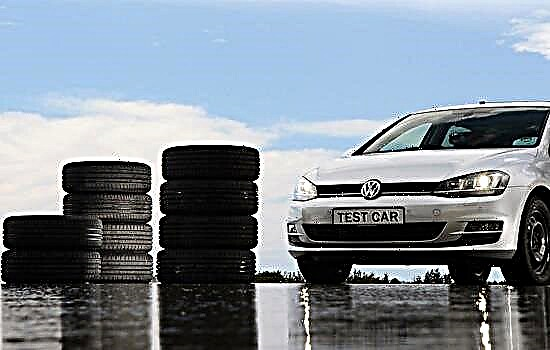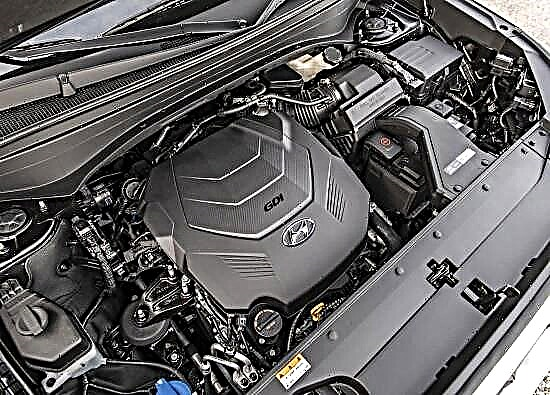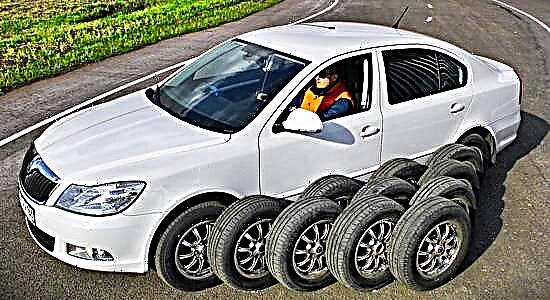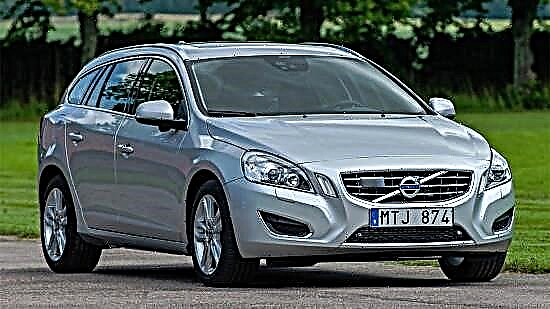The Swedes have always been famous for their ability to produce high-quality station wagons and the Volvo V60 model in this regard was no exception. But, despite this, the Swedes failed to successfully launch the base model (debuted in 2010 and updated in 2013) on our market (although this “car” is one of the best-selling station wagons in Europe).

However, this is not yet a reason to pass by the V60 without looking at it at least a cursory glance ... And you will not be able not to look at the Volvo V60, because the elegant appearance of the station wagon immediately attracts the close attention of others - enticing with a swift silhouette, verified proportions, stylish optics and a pretty "muzzle" with a little stern look.

It is difficult to discern the hints of a typical family everyday car in the Volvo V60, it looks more like an aggressive beast wearing sheep's clothing and deliberately hiding its sporty character. It is enough to look closely at the dynamic contours of the body to understand that this station wagon is capable of a lot.

At the same time, the Volvo V60 is quite compact and is almost identical in size to the S60 sedan: The station wagon body length is 4635 mm, the width fits into the frame of 1865 mm, and the height is limited to 1484 mm. The wheelbase is 2776 mm. The front and rear track widths are 1588 and 1585 mm, respectively.
The curb weight of the station wagon ranges from 1637 kg to 1844 kg and depends on the type of engine and equipment level.

The interior of the Volvo V60 is almost completely copied from the S60 sedan, with the exception of some minor modifications and the layout of the rear row of seats.

The station wagon has a lot more headroom in the back, and landing in the cabin is noticeably easier (due to the different shape of the doorways).
The trunk of the station wagon is also noticeably freer: in its standard state it can accommodate 430 liters of cargo, and with the second row of seats folded down - 1241 liters.

The range of engines for the Volvo V60 is very wide and varied. There are five gasoline engines and four diesel power plants on display here. Absolutely all engines are equipped with a turbocharging system with varying degrees of boost, a direct fuel injection system and have an in-line arrangement of cylinders.
- The younger gasoline unit received 4 cylinders with a volume of 1.6 liters and is capable of delivering 150 hp. maximum power, as well as 240 Nm of torque.
- Its more uprated version already offers 180 hp. power and the same peak torque, but available over a wider rpm range.
- Slightly higher in the list of engines is a 4-cylinder engine with a displacement of 2.0 liters, a return of 203 hp. and a maximum torque of 300 Nm.
- The only 5-cylinder unit in the lineup received 2.5 liters of displacement, which allows it to develop up to 249 hp. power and 360 Nm of torque.
- Well, the flagship engine has six cylinders with a total volume of 3.0 liters and is capable of delivering about 304 hp. power, as well as 440 Nm of torque.
- The diesel line is opened by a modest 4-cylinder 1.6-liter engine with 115 hp. and a torque of 270 Nm.
- Slightly higher is a 5-cylinder unit with a volume of 2.0 liters, already capable of delivering 136 hp. and 350 Nm of torque.
- Another 2.0-liter diesel offers 163 hp. maximum power and about 400 Nm of torque.
- The diesel flagship received the same five cylinders, but with a displacement of 2.4 liters, a return of 205 hp. and a peak torque of 420 Nm.
The Swedes also offered a choice of gearboxes, but there are not so many options: 6-speed "mechanics" and 6-range "automatic" Powershift. At the same time, we note that modifications equipped with an all-wheel drive transmission are equipped only with an automatic transmission.
The Volvo V60 station wagon is built on the Volvo P24 platform, which assumes the use of a front independent suspension based on MacPherson struts and a multi-link rear independent suspension.
The front wheels of the Volvo V60 are equipped with ventilated disc brakes, while the rear wheels are equipped with simple disc brakes. The station wagon's steering is based on a rack and pinion mechanism, supplemented by a hydraulic booster.
We also note that the Volvo V60 receives a fairly wide list of electronic assistants, among which it is worth highlighting adaptive cruise control, a blind spot monitoring system, a traffic sign monitoring system and a driver behavior monitoring system.
At the beginning of 2017 on the European market, this station wagon is offered at a price of 32,100 euros.





